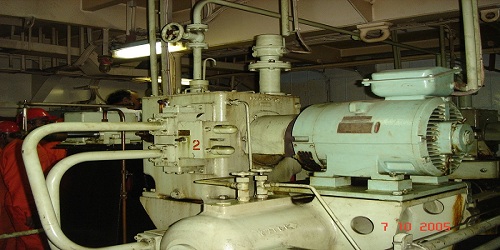Most Popular
-
Effective Predictive Maintenace in Marine Industry
It is a technique that helps us decide or predict the next maintenance cycle of the in-service machi.. -
Technology to reduce Ship fuel consumption
Fuel Oil Emulsion (FOE) technology by Blended Fuel Solutions burns more completely than unmodified f.. -
IoT in Maritime
Despite the fact ships carried an estimated 9.6 billion tons of cargo in 2013 – around 80% of glob..
MAINTENANCE OF EMERGENCY GENERATORS ON SHIP
In an emergency situation every emergency equipment or system provided on board is an important lifeline for the ship and its crew. Emergency Generator is without doubt one of the most important equipment on board, which is responsible for preventing accidents and grounding during power failure while the ship is in heavy traffic, channels, rough weather or in manoeuvring. It provides backup power in emergency.
Considering its high importance, the emergency generator is required to be tested regularly along with carrying out all important planned maintenance jobs as per schedule. This would not only ensure smooth running of the emergency generator but would also avoid breakdown when the ship is already facing a distress situation.
SOME OF THE IMPORTANT MAINTENANCE PRACTICES OF EMERGENCY GENERATOR ARE FOLLOWS
1. Change of Engine Sump Oil: It is important to check the oil level in the sump regularly. Since the emergency generator is kept on auto mode, which ensures the generator starts and comes on load automatically, it is necessary that before starting the engine for operation, oil level is checked on regularly basis. The condition of the oil will be known during this period and if the oil is having carbon or soot particles, change of complete oil system needs to be done. The running hours for changing of engine oil depends on the manufacturer, the engine make and the oil grade in use. Normally it is done between 250-500 hrs. The oil changing period must be cut by half when the fuel used in generator is more than 0.5% to 1% surplus.
2. Clean Oil Filter Cartridge: The emergency generator is provided with various oil filters such as by pass filter, centrifuge filter, lube oil filter, fuel feed pump filter etc. These filters need to be cleaned or renewal of filter cartridge is to be carried out as per the maker’s instruction or oil condition.
3. Clean Air Cleaner: The combustion air for the engine is passed through an air filter, which can be of following types:
1. Oil bath air cleaner
2. Dry type air cleaner (cartridge or dust collector).
It is important to clean the air filter at correct intervals of time as delay will lead to clogging and less air going in the engine. This will reduce the efficiency of the engine and increase the thermal parameters. When using dry cartridge, ensure to replace them at intervals stated by the maker. Normal replacement schedule is one year or after 5-7 cleanings.
4. Check Water Separator: Some emergency generators are provided with water separator to prevent mixing of water with fuel. Check the level of water and make sure it is below the marked level and regularly drained off. This is to be done to avoid rust and corrosion of fuel line devices and to avoid incomplete combustion.
5. Check Electrolyte in the Battery: A battery is used in one of the starting methods of the emergency generator. The electrolyte level in the battery must be checked at regular intervals either by inserting a level stick or by checking the water level in the level tester cap (if provided). Use distilled water to make up for the low level.
6. Check Alarms and Shutdowns: All the safety devices and alarms fitted in the emergency generator must be checked and tested regularly. Generator with V-belts has additional alarm which will be sounded in the event of belt failure and operated by idler pulley.
7. Check V belt Tension: When V belt is fitted, inspect the same for cracks and damages. Renew the belt if damage/ cracking appearance is more. To check the belt tension, press the belt by thumb in midway of the pulleys and check the inward deflection in mm. It should not be more than 10-15 mm depending upon the maker of the generator.
8. Check Valve Clearance: The tappet clearance of the inlet and exhaust valve should be checked at running hours stated in the maintenance section of the generator’s manual. Also ensure the engine is cold before taking the tappet clearance.
Loss of emergency generators at times when they are needed the most can lead to unfortunate and disastrous incidents. Followed a proper planned maintenance system along with thorough regular checks is the key to ensure smooth running of emergency generators on board ships.
